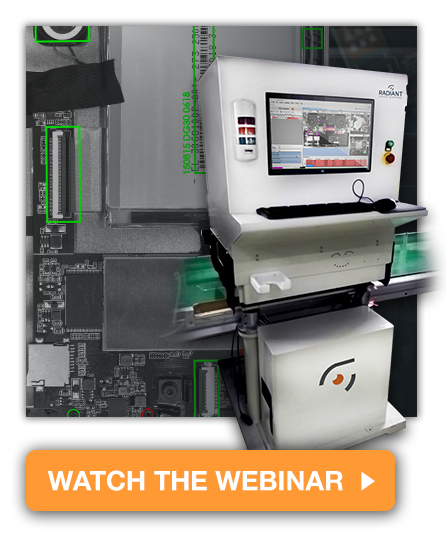Can Any Machine Inspect Better than a Human?
Robots are getting better at doing more and more tasks—from devices that vacuum our homes, to drones that deliver packages, to robotic arms that help build automobiles. But one thing machine systems haven’t been able to do well until recently is match the acuity of human vision. Precise visual assessment is particularly important for inspecting products like electromechanical devices. The more complex an assembly, the greater the chance an error will occur during production—and the more challenging it becomes to visually verify assembly integrity.
Standard machine vision systems are unable to capture images at a high enough resolution to detect all defects in a complex electromechanical assembly, especially when errors are defined by very small or subtle tolerances. For this reason, many manufacturers use human inspectors for complex assembly verification of high-value devices. They rely on an inspector’s heightened visual acuity and excellent judgment to identify and grade critical defects.
However, human inspectors are, well, human. They are easily fatigued when studying intricate arrays and configurations of components for extended lengths of time. Their determinations may be inconsistent from person to person. And sometimes they miss small details like a misrouted cable that could lead to latent failures once the product is in customer hands.
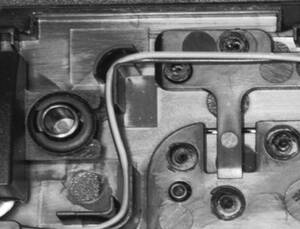
|
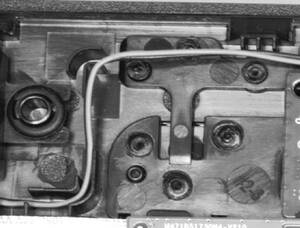
|
The human eye may miss a subtle error like a cable that is not properly routed around its guide (right image), which could later be pinched or damaged, causing a latent product failure.
Despite these drawbacks, some manufacturers continue to rely on human inspectors simply because machine vision and other automated technologies have been unable to detect critical defects or match the accuracy of human judgment to evaluate defect severity. Photometry-based imaging systems—like Radiant’s INSPECT.assembly™ solution—now offer the best of both worlds for high-precision assembly verification; that is: visual detection capabilities that match or exceed the acuity of human inspectors, with the speed, repeatability, and quantifiable data of automated machine vision systems.
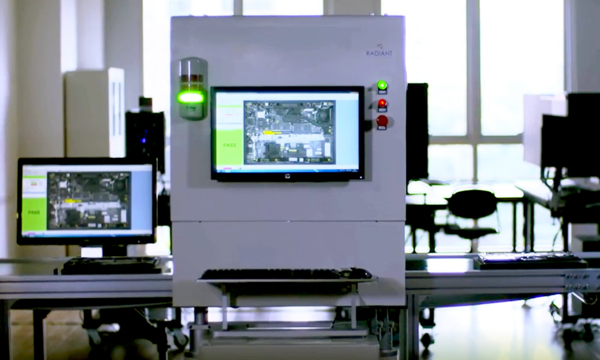
Radiant’s in-line INSPECT.assembly station combines precision optics with automated pass/fail testing.
Exceeding Human Inspection Accuracy. The INSPECT.assembly system uses a camera with a scientific-grade image sensor that has a broad dynamic range (better than 59 dB) enabling it to detect hairline contrast variations on part surfaces caused by reflections of light (like shadows that indicate a drill hole, or spectral reflections that indicate a metal component). The system can capture and classify defects with extreme precision, processing images at high speed while producing very low image noise. INSPECT.assembly cameras offer extremely high image sensor resolution, enabling them to detect defects so subtle that they go unnoticed by human inspectors, such as a gap variation between components of less than 1mm or the absence of tiny black screws on a black surface.
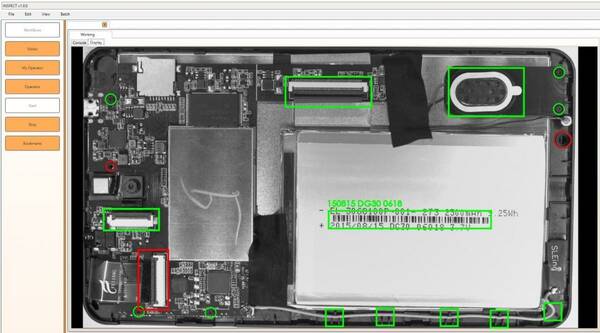
Image captured by the INSPECT.assembly system and analyzed by onboard INSPECT Software.
The INSPECT.assembly station performs sophisticated pass/fail analysis right on the manufacturing line, providing the acuity of human inspectors at production speeds, with even better reliability and consistency. To learn more about these benefits, read our Tech Note, or watch a 30-minute webinar on using Advanced Vision systems for improved assembly verification.
Join Mailing List
Stay up to date on our latest products, blog content, and events.
Join our Mailing List
